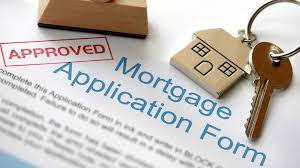 When shopping for a luxury home you demand certain characteristics of a potential purchase. Where do you want to live? Will this be a primary residence or are you buying a second home to spend part of the year? How big? Single-family home or condo downtown? You have the ability to really fine-tune your requirements and you can take your time reviewing your options.
When shopping for a luxury home you demand certain characteristics of a potential purchase. Where do you want to live? Will this be a primary residence or are you buying a second home to spend part of the year? How big? Single-family home or condo downtown? You have the ability to really fine-tune your requirements and you can take your time reviewing your options.
You also have options as it relates to financing. Your best options are those for a primary residence. With an owner-occupied property, you’ll get the lowest jumbo rates available at a lower cost. Recent changes with the primary residence jumbo loan raise the loan limits based on the amount of your down payment.
This is good news for those who wish to put as little money down as possible and leverage today’s low rates. Financing 95% (5% down payment) the loan limits have recently increased to $1,500,000. With a 10% down payment, the maximum loan amount is $3,000,000 and with 20% down the maximum is $3,500,000. All these programs require minimum credit scores and reserves to be eligible. Please read more about the latest down payment and credit score requirements on the Jumbo purchase page.
How much you should put down should be discussed with your financial advisor. Remember when you make a larger down payment on a mortgage your equity is tied up in the house, no longer liquid. Some home buyers prefer to put as little down as possible when rates are this low while keeping their investments working for them.
In today’s market, there are two basic financing options- fixed and adjustable. While fixed rates are no longer at historic lows they’re not far from them and jumbo fixed rates are very attractive. If you intend to live in the property or otherwise hold onto it for an extended period of time, then a fixed rate might be your better choice. A fixed rate lets you and your financial planner more easily prepare for the future as your mortgage payment will stay the same throughout the life of the loan. However, fixed rates do have a higher rate compared to an adjustable-rate mortgage.
 Adjustable rate mortgages have an initial start rate lower than a fixed. And as the name implies an adjustable rate mortgage can adjust at some point in the future. These change points are built into the note so you’ll be able to anticipate future payments. A 1-Year adjustable rate mortgage is one that is fixed for one year before being eligible for an adjustment.
Adjustable rate mortgages have an initial start rate lower than a fixed. And as the name implies an adjustable rate mortgage can adjust at some point in the future. These change points are built into the note so you’ll be able to anticipate future payments. A 1-Year adjustable rate mortgage is one that is fixed for one year before being eligible for an adjustment.
The adjustment is based upon a preselected index, such as a 1-Year Treasury Bill, and a margin that is added to the index. The result is the new rate for the next 12 months. There are also interest rate caps that can limit the amount of change from one year to the next.
Adjustable rate mortgages have an initial start rate lower than a fixed. And as the name implies an adjustable rate mortgage can adjust at some point in the future. These change points are built into the note so you’ll be able to anticipate future payments. A 1-Year adjustable rate mortgage is one that is fixed for one year before being eligible for an adjustment. The adjustment is based upon a preselected index, such as a 1-Year Treasury Bill, and a margin that is added to the index.
The result is the new rate for the next 12 months. There are also interest rate caps that can limit the amount of change from one year to the next. A hybrid mortgage is another adjustable-rate mortgage but the start rate is fixed for a predetermined number of years. For example, perhaps the most common hybrid is the 5/1 or 7/1 program. The rate, while still lower than a companion fixed, remains the same for five years before turning into an adjustable rate program that can change once per year for the life of the loan.
A hybrid can be a better choice than a fixed rate if you don’t intend to keep the property for the long term. If you’re thinking of living in the home for say five or seven years, then a 5/1 or 7/1 hybrid might make sense for your situation. Long term? Fixed. Shorter-term? Hybrid.
Home buyers that questions about requirements or mortgage preapproval can reach out to us by calling the number above to just fill out the Quick Call Form on this page.
Serving buyers across the U.S. including Illinois – Aurora, Chicago, Cook County, Rockford, Joliet, Naperville, Springfield, Peoria, Des Plaines, Orland Park, Tinley Park, Oak Lawn, BerwynElgin, Waukegan, Cicero, Champaign, Bloomington, Arlington Heights, Evanston, Decatur, Schaumburg, Bolingbrook, Palatine, Skokie
